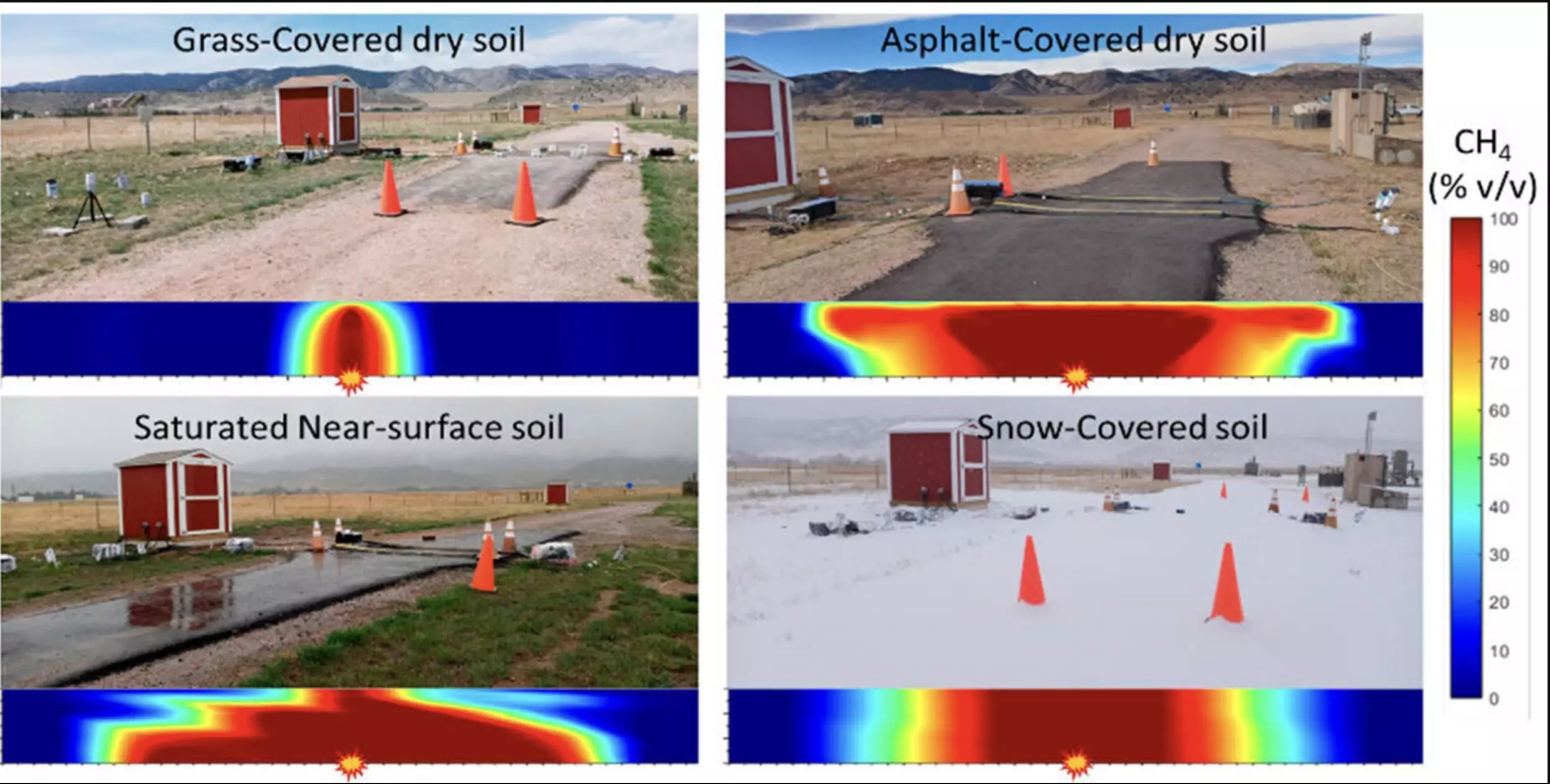Natural gas leaks pose one of the most significant safety and environmental challenges facing our society today. While we often hear about such incidents, the dynamics of gas movement in different environmental conditions remain poorly understood. A recent study led by Southern Methodist University (SMU) reveals a groundbreaking connection between surface conditions and the behavior of leaked natural gas underground. This exploration not only informs better safety measures but also highlights the implications for global warming, positioning us at a critical juncture in pipeline safety and environmental stewardship.
The Research Breakthrough
The SMU research team has unveiled that natural gas can migrate significantly farther and faster through moist or paved surfaces than through dry soil, with the potential distance extending up to three to four times farther. This malleability of gas movement can lead to potential hazards being overlooked in the urgency of pipeline inspections and emergency responses. Kathleen M. Smits, co-author and notable figure in the field, emphasizes the vital need for first responders and gas companies to incorporate soil surface conditions into their risk assessment protocols. The comprehension of these intricacies is not just an academic endeavor; it is a matter of public safety.
These insights are particularly relevant given the dual threat posed by methane—its explosive potential and its contribution to climate change. Methane is responsible for a substantial portion of the greenhouse gases driving global warming. As such, understanding how and where methane escapes into the environment can directly influence our efficacy in combating climate change. The study plays a pivotal role in identifying problem areas, ultimately leading to more proactive environmental strategies.
The Experiment: A Groundbreaking Approach
Carried out at Colorado State University’s Methane Emissions Technology Evaluation Center (METEC), the researchers created controlled leak scenarios that mimic real-world conditions. They experimented under various surface covers—like rain-soaked grass, dry soil, and asphalt—to observe how these variables impact gas migration. This methodology sheds new light on the often-ignored micro-details in the study of gas leaks, revealing that even minor changes in surface conditions can have disproportionate effects on gas behavior.
Navodi Jayarathne, the lead researcher, describes the fascinating analogy of gas moving through the soil as akin to moving through “Swiss cheese.” The concept suggests that gas can navigate through not just the spaces left by soil particles, but also through moisture and interstitial pockets created by changing surface conditions. This phenomenon heightens the urgency to analyze environments where pipelines are laid, encouraging energy companies to adopt new preemptive measures tailored to specific locales.
Unaccounted Risks
Perhaps one of the most alarming discoveries from this research is that even after a leak has been sealed, methane can remain trapped beneath wet or snow-laden surfaces for extended periods, surfacing only days later. This phenomenon challenges the conventional understanding that immediate danger dissipates once a leak has been stopped. Smits highlights that the evolution of gas behavior necessitates continuous monitoring, even post-repair, to ensure the safety of surrounding areas. This revelation ought to instill a sense of urgency and vigilance among emergency responders, making effective pipeline management a dynamic and ongoing process rather than a one-time event.
Envisioning a Safer Future
The implications of this research extend beyond immediate safety considerations. By recognizing the risks associated with natural gas migration, energy companies can prioritize identifying the most hazardous leaks, focusing their resources on areas most likely to pose threats to public safety and the environment. The twin objectives of minimizing risk to human life and combating climate change can thus become interconnected aspects of energy management.
As society progresses towards sustainable energy solutions, studies like this serve as crucial stepping stones. By bridging the gap between surface and subsurface interactions of natural gas, researchers are paving the way for innovations in training for pipeline inspectors and emergency responders. In an era where climate urgency is paramount, each piece of this intricate puzzle brings us closer to harmonizing energy needs with environmental imperatives.
While this research provides significant insights, it also calls for a reevaluation of existing protocols in gas and oil industries. As our understanding of these underground processes grows deeper, so does our responsibility to leverage this knowledge toward a safer and greener future. The urgency for robust systems to manage pipeline safety alongside climate considerations has never been clearer.


Leave a Reply